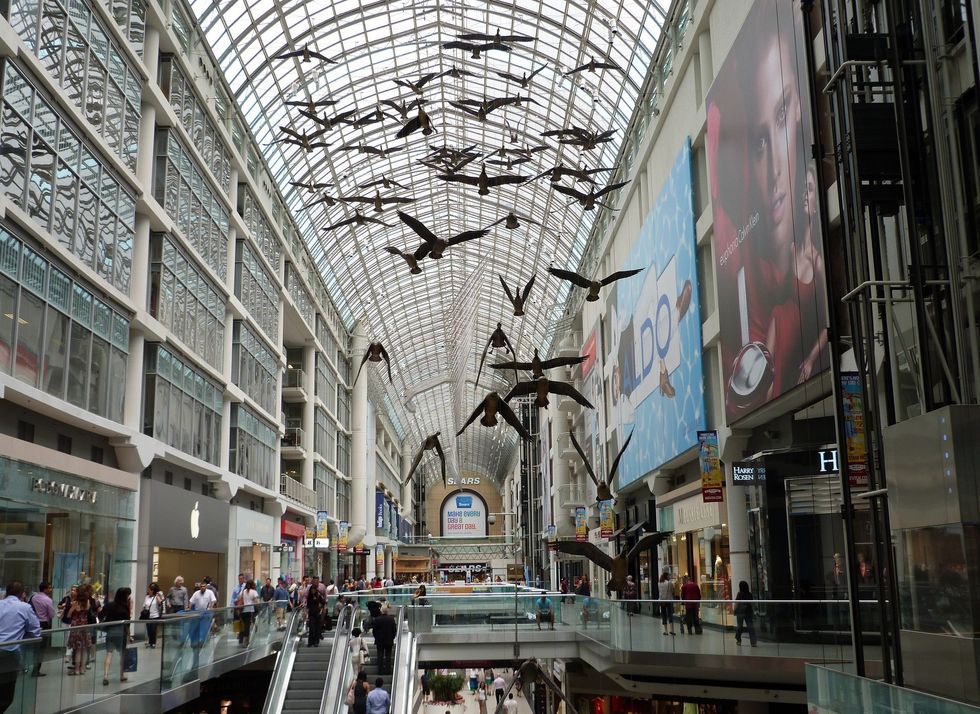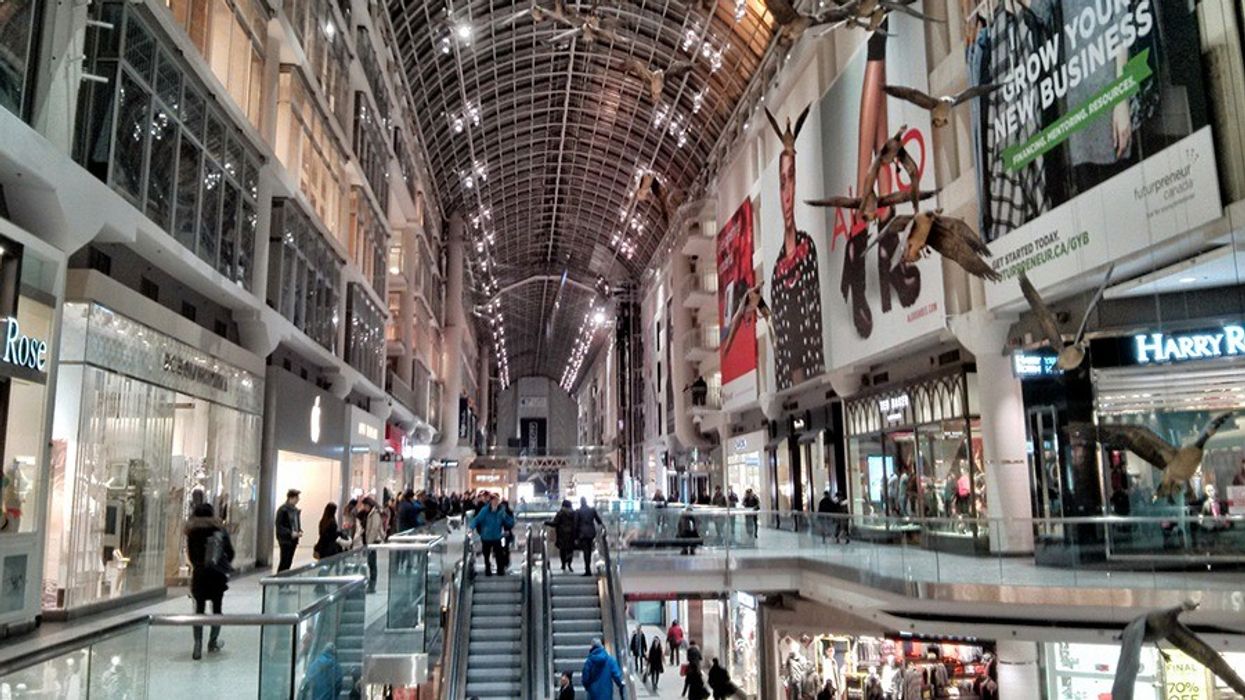
Reports of its demise may be exaggerated, but suddenly the neighbourhood mall faces an uncertain future. Across North America local shopping centres are closing in numbers that have left observers shocked. One study by Credit Suisse estimates that 20 per cent to 25 per cent of all malls in the U.S. will have closed by 2022.
In Canada, where enthusiasm for the mall never reached quite the same levels, the situation is not quite as dire. Still, it’s clear the urban/suburban landscape here is undergoing big change.
There are several reasons. In addition to the rise of online shopping — think Amazon — post-recession buying habits are in flux. We're now choosing to spend our money on experience more than stuff. That means more eating out and travel over traditional consumer goods, especially clothing.
Bye bye large chains

The demise of many large retail chains — most recently, Sears — has devastated malls. The old formula of a large enclosed space anchored at either end by big department stores no longer applies.
Many of the historic marquis tenants — Eaton’s and Simpsons, Target and Zellers — have either long since disappeared or shrunk to single-digit stores. Lesser chains have also vanished. Danier Leather, Mexx, Jacob and American Apparel are just a few, with Tip Top Tailors closing select locations.
Given the natural affinities between mall culture and franchise economics, it's no surprise the fates of the two are so closely entwined. They rise and fall together. While big malls — Eaton Centre, Yorkdale, etc. — have survived the decline of chains, their smaller local counterparts have been more vulnerable to these tectonic shifts in consumerism.
"It's the slow dying of secondary malls," Ed Sonshine, CEO of the largest mall owner in Canada, RioCan Real Estate Investment Trust, told the CBC. "The whole theory of a mall was that those department stores, those anchors, would entice customers to the mall in the first place. And then, as customers were going between those two anchors, they would find things to buy at the other stores. The theory started to fail at the same time that department stores started to fail."
Return to urbanism
In the meantime, the return to urbanism has driven up real estate prices to unprecedented heights. In many cases, the ground on which these now shabby malls sit is worth more than the malls themselves.
In Toronto, a.k.a. Condo City, the implications are obvious. A minor example is unfolding now at King and Dufferin, where a tired 1960s strip mall will be torn down to make way for a mixed-use residential/retail complex. Then there's Honeydale Mall in Etobicoke, which has been closed up and shut down. Little wonder it has been called a "ghost mall."
But as one door close, another opens.
Builders are now eyeing these failing shopping centres as possible redevelopment sites, which typically means condos on top, shops below. Because these malls were built at the most desirable locations — busy corners and main streets — they are doubly attractive to developers. As Sonshine pointed out, RioCan’s 300-plus properties across Canada add up to a land bank with more potential than ever.
In Toronto, where property value is high and land availability low, building sites are much sought after. Though the city hasn't run out of parking lots quite yet, they are growing increasingly hard to find. Malls are next on the list. This is especially true in suburban areas where malls are numerous.
Feeling the pressure
As many of these neighbourhoods and small towns densify, the need to find better, more profitable ways to use land becomes ever more urgent. Malls in communities as diverse as Malvern, Etobicoke, Pickering, Whitby and Oshawa are feeling the pressure.
Though it isn't called a mall, a large site at Bloor and Dundas Street West may be up for redevelopment. The property, just north of the very popular Roncesvalles neighbourhood, is now occupied by Loblaws, an LCBO and a parking lot. Earlier this month, the landlord and local councillor, Gord Perks, held a public meeting asking for ideas. Chances are it will end up a more urban mixed-use scheme.
But even the large regional centres Yorkdale, Sherway Gardens and the Eaton Centre prosper significantly because owners have invested vast sums to keep them current.
The biggest mall in Ontario, Mississauga's Square One, has reinvented itself regularly throughout its 44-year existence. Much of the massive parking lot that surrounds it has been given over to development. Indeed, Square One now has below-grade parking, something that would have been unthinkable when it opened in 1973. Back then, its neighbours included farmers' fields.
Rethinking the mall
Gazing into his crystal ball back in 2010, Toronto's former chief planner, Paul Bedford, wrote about, "rethinking the mall by transforming the acres of free surface parking into underground and/or parking structures, developing a street grid instead of a circular perimeter road, building a full range of low-, medium- and high-rise rental, condo and townhouse units on new blocks lined with sidewalks ... Community centres, recreation facilities, health clinics, libraries, daycare ... would be part of the concept. The key would be to transform the mall into a community asset, not just a retail asset."
Welcome to the future! The mall will still be with us, just not in a form we see today. But, as they say, the more things change ...
*Editor's note: This is amended from an original version, which incorrectly stated Tip Top Tailors had closed down.





















